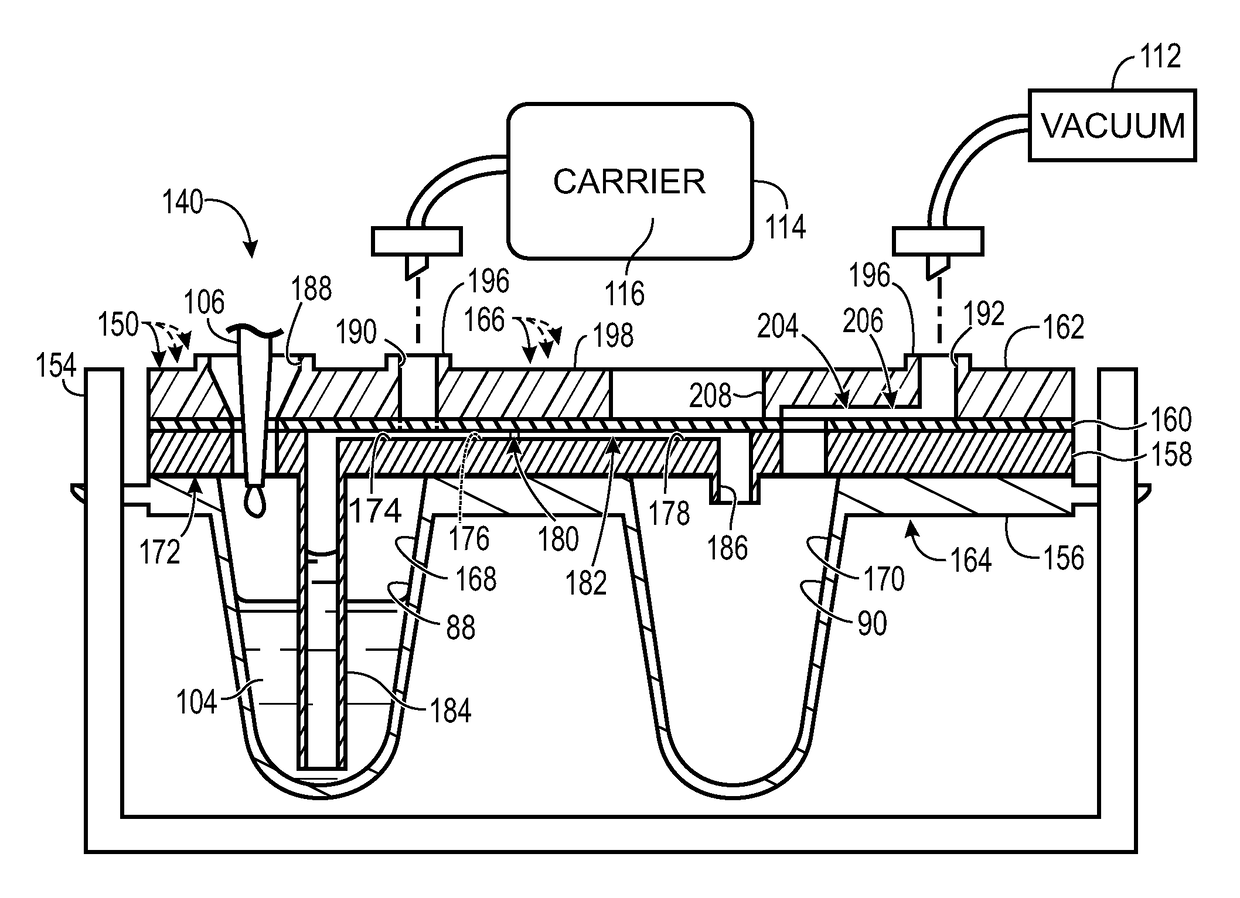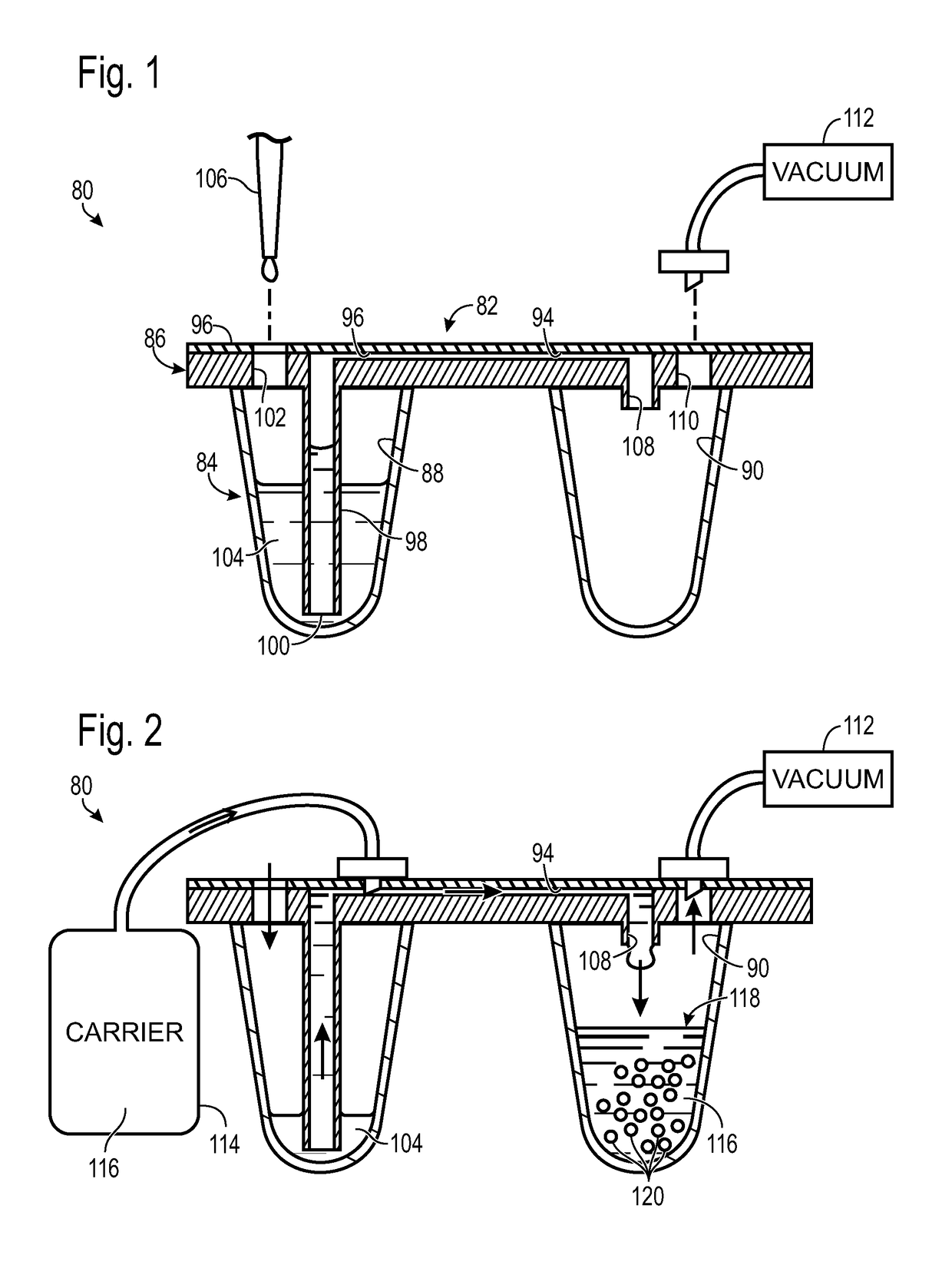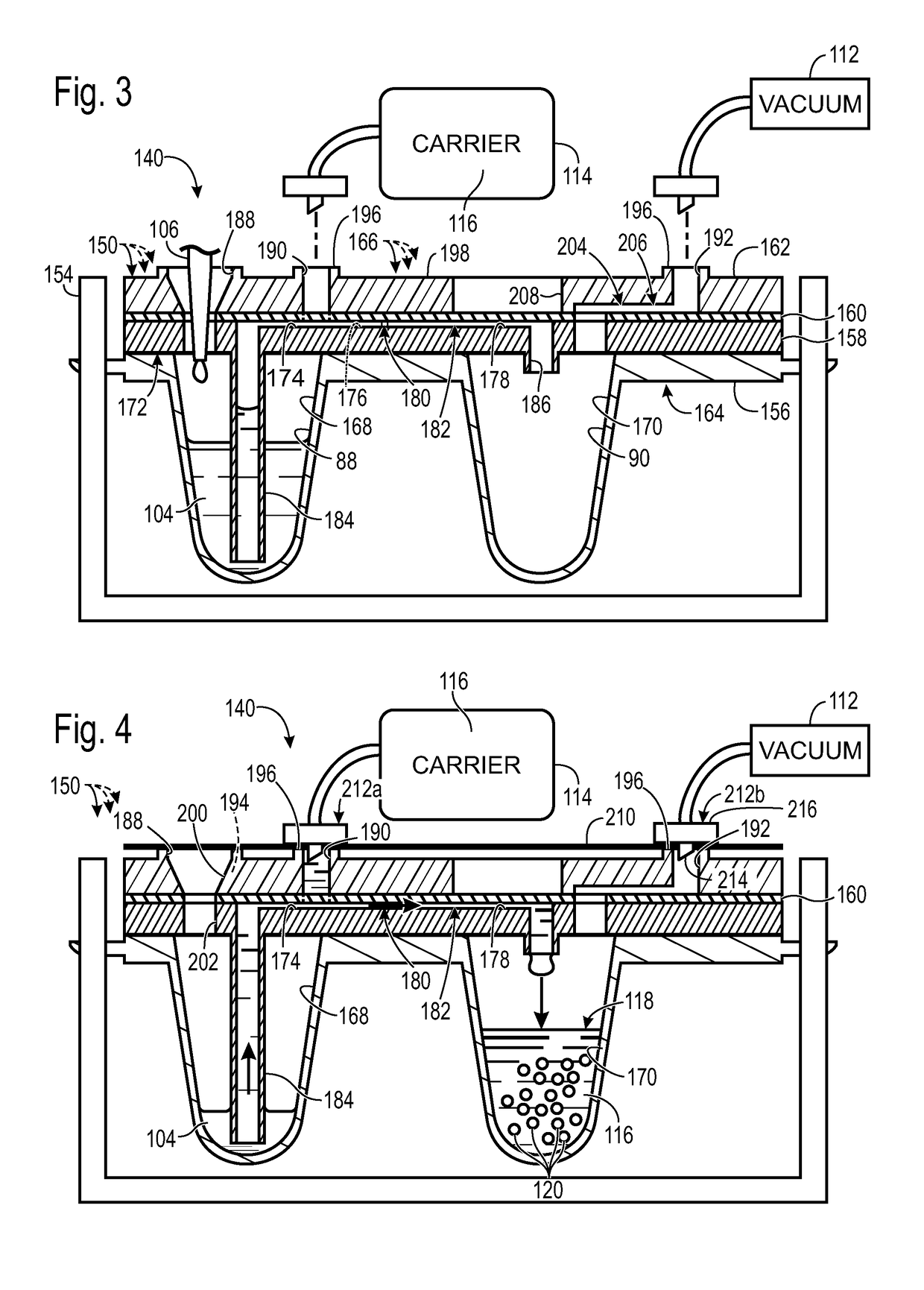System, method, and device for forming an array of emulsions
a technology of arrays and emulsions, applied in the field of systems, methods, and devices for forming arrays of emulsions, can solve the problems of less user-friendly devices, bulky devices and costly manufactures, and small device users, and achieve the effect of facilitating bonding of sealing members
- Summary
- Abstract
- Description
- Claims
- Application Information
AI Technical Summary
Benefits of technology
Problems solved by technology
Method used
Image
Examples
example 1
Cartridge with Frame and Microfluidic Modules
[0096]This section describes further exemplary aspects of microfluidic device 140 of Section I, as embodied by a microfluidic cartridge 300 (interchangeably called a microfluidic device) having a non-fluidic frame that holds microfluidic modules 150; see FIGS. 7-32. Selected structures and features of cartridge 300 that correspond to those described above for microfluidic device 140 have been assigned the same reference numbers as in device 140.
[0097]FIGS. 7-10 show various views of cartridge 300 without (FIGS. 7, 8, and 10) and with (FIG. 9) a sealing member 210 that may hermetically seal the cartridge. The cartridge includes a frame 154 and a plurality of microfluidic modules 150 mounted to the frame. The modules may be substantially identical to one another, and may be mounted to the frame by the manufacturer or the user. Once mounted, the modules may or may not be configured to be removable by the user. The modules may be placed into ...
example 2
Cartridge with Fluidic Frame
[0127]This section describes an exemplary microfluidic cartridge 400 (interchangeably called a microfluidic device) having a frame 402 providing fluidic features for emulsion formation; see FIGS. 33-39. Structures and features of cartridge 400 that correspond to those described above for microfluidic device 140 of Section I and / or cartridge 300 of Example 1 have been assigned the same reference numbers as in device 140 or cartridge 300.
[0128]Cartridge 400 has a plurality of microfluidic modules 404 bonded to frame 402 in a fluid-tight seal. Modules 404 are constructed generally as described above for modules 150 in Example 1, except that guide / port layer 162 of each module is omitted. The guide / port layer is replaced by a vacuum manifold layer 406 and a guide / port layer 408 that are shared among modules 404. Vacuum manifold layer 406 is bonded to a top side of capping layer 160 of each module 404, and guide / port layer 408 is bonded to a top side of manifo...
example 3
Cartridge with Onboard Carrier Reservoir
[0134]This section describes an exemplary microfluidic cartridge 500 (interchangeably called a microfluidic device) having a frame 502 providing fluidic features for emulsion formation, including an onboard reservoir 504 for carrier fluid 116; see FIGS. 40-42. Structures and features of cartridge 500 that correspond to those described above for microfluidic device 140, cartridge 300, and / or cartridge 400 have been assigned the same references numbers as in those devices.
[0135]Cartridge 500 has a structure shared generally with cartridge 400, including modules 404 bonded in a fluid-tight seal to an underside of a platform 506 of frame 502. (Only one module 404 is shown in FIG. 40 to simplify the presentation.) Platform 506 forms a guide / port layer 508 of the cartridge, which has the vacuum manifold 204 of manifold layer 406 of cartridge 400 formed integrally by platform 506, rather than as a separate layer. Platform 506 defines, for each module...
PUM
| Property | Measurement | Unit |
|---|---|---|
| Pressure | aaaaa | aaaaa |
Abstract
Description
Claims
Application Information
 Login to View More
Login to View More - R&D
- Intellectual Property
- Life Sciences
- Materials
- Tech Scout
- Unparalleled Data Quality
- Higher Quality Content
- 60% Fewer Hallucinations
Browse by: Latest US Patents, China's latest patents, Technical Efficacy Thesaurus, Application Domain, Technology Topic, Popular Technical Reports.
© 2025 PatSnap. All rights reserved.Legal|Privacy policy|Modern Slavery Act Transparency Statement|Sitemap|About US| Contact US: help@patsnap.com



